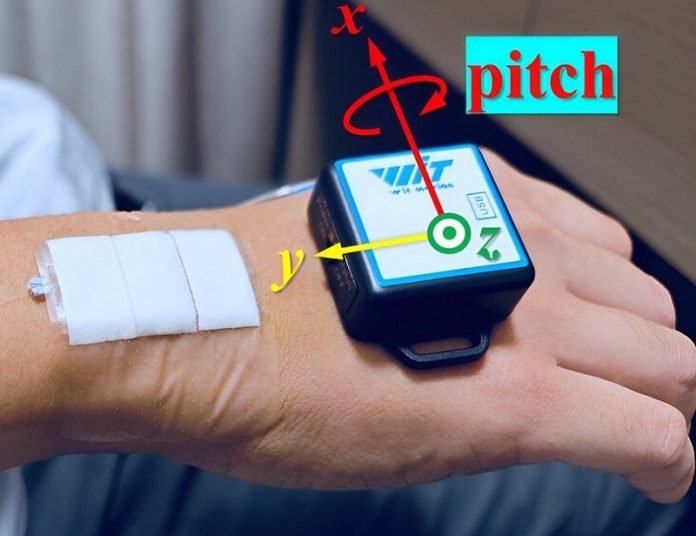
Imagine having a thin, flexible sticker on your skin that can turn the slightest hand or finger movement into a message or command, all without you needing to speak or press any buttons.
This isn’t a scene from a sci-fi movie—it’s a real technological breakthrough developed by researchers from China.
These smart sensors, detailed in Biomedical Optics Express, are designed to be a comfortable, wearable technology that can understand and translate movements with incredible precision.
The team behind this innovation comes from Beijing Normal University, Sun Yat-sen University, and Guilin University of Electronic Technology.
They’ve created a sensor that combines a soft, skin-friendly material called polydimethylsiloxane (PDMS) with a clever optical component known as a fiber Bragg grating (FBG).
This combination makes the sensor not only comfortable for all-day wear but also finely tuned to detect movements with high sensitivity.
This technology could be a game-changer for people recovering from strokes, those with mobility or speech challenges, and even athletes or gamers.
For instance, someone rehabilitating from a stroke could wear this sensor to track and improve their finger or wrist movements. People who have difficulty speaking or moving could use these sensors to communicate through gestures or facial expressions, turning them into spoken words or digital commands.
The secret to the sensor’s sensitivity lies in how it’s made. The PDMS material is flexible and gentle on the skin, allowing for extended wear without discomfort.
The FBG within it acts like a mirror for specific light wavelengths, changing as the material bends or stretches. This change lets the sensor detect even the smallest movements, like the bend of a finger or the twist of a wrist.
To prove how well these sensors work, the researchers conducted tests where they attached the sensors to different body parts, like wrists and fingers, to pick up various movements.
They even developed a system that could translate simple hand gestures into words, using something like Morse code. The results were impressive, showing that these sensors could accurately recognize a wide range of gestures and translate them into communication.
What’s really exciting is that this is just the beginning. The research team is working hard to make these sensors even smaller, more durable, and capable of wireless communication with other devices like smartphones or computers.
This means that in the future, users could control gadgets, send messages, or even call for help just by moving their hands. Plus, medical professionals or caregivers could monitor a patient’s progress in real time, thanks to this innovative technology.
In summary, this new wearable sensor technology opens up countless possibilities for helping people communicate and interact with the world around them in ways never before imagined.
Whether for medical rehabilitation, assisting those with disabilities, or creating more immersive gaming experiences, these sensors are a peek into a future where technology and human movement become seamlessly integrated.
Source: KSR



